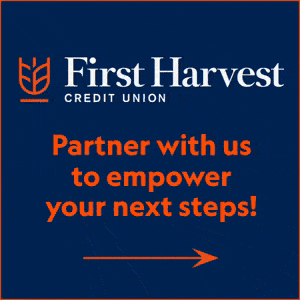
The Restaurant Revitalization Fund: What to Know
The Small Business Administration (SBA) recently released a program guide and sample application for its new Restaurant Revitalization Fund (RRF) program, intended to help restaurants and alike businesses impacted by the COVID-19 pandemic. Highlights of the new Guide include clarifications on which entities are eligible, grant calculation specifics, and how to apply.
An April 19 SBA release also provided an update on their program timeline: Before the official program launch and “over the next two weeks,” SBA plans to establish a seven-day pilot period for the application portal involving randomly selected existing PPP borrowers in RRF priority groups. (These participants will not receive funds until the program opens more widely.)
After that pilot, the application portal will be fully opened to all applicants, and “the official launch date will be announced at a later date.” Note that “for the first 21 days that the program is open, the SBA will prioritize reviewing applications from small businesses owned by women, veterans, and socially and economically disadvantaged individuals,” SBA said in the release. (Read on for more about these priority groups.)
Now that this information is available, interested businesses should start familiarizing themselves with the Guide (first released April 17, and updated April 20) and sample application and gathering the materials they will need to apply. Read on for highlights of how to apply, who is eligible, how to calculate grant amounts, what grant funds can be used for, and more.
We will also be hosting a webinar next Wednesday, April 28, in which we will go through the calculations, application process, and other key information in more detail. Register now to attend.
Background
The March American Rescue Plan Act created this $28.6 billion fund to be administered by SBA specifically for restaurant and alike operators. As with the Paycheck Protection Program (PPP), RRF applicants must make a good-faith certification that “current economic uncertainty makes this funding request necessary to support the ongoing or anticipated operations of the applicant.”
These grants are excluded from taxable income, and all expenses paid with grant proceeds are deductible for federal tax purposes.
Who is eligible for RRF grants?
“Eligible entities” are defined as:
- Restaurants, food stands, food trucks, food carts, caterers, bars, saloons, lounges, taverns, snack and nonalcoholic beverage bars, “licensed facilities or premises of a beverage alcohol producer where the public may taste, sample, or purchase products,” or “other similar places of business in which the public or patrons assemble for the primary purpose of being served food or drink,” including an entity located in an airport terminal, an entity that operates independently (has its own tax identification number) inside another business (i.e., a restaurant in a hotel or conference center), or a Tribally-owned concern (any concern that is at least 51% owned by an Indian tribe).
- Bakeries, brewpubs, tasting rooms, taprooms, breweries, microbreweries, wineries, and distilleries must provide additional documentation to support that at least 33% of 2019 gross receipts were derived from on-site sales to the public.
- Inns will be eligible if on-site sales of food and beverage to the public made up at least 33% of total 2019 gross receipts.
- The Guide states, “To satisfy the statutory requirement for ‘place of business in which the public or patrons assemble for the primary purpose of being served food or drink,’ an eligible entity must have at least 33% in 2019 on-site sales to the public. The original business model of eligible entities that opened in 2020 or that have not yet opened should have contemplated at least 33% of gross receipts in on-site sales to the public. Those entities without additional documentation requirements, such as restaurants and bars, are presumed to have on-site sales to the public comprising at least 33% of gross receipts in 2019. All Applicants must attest in the application to the following: ‘The Applicant is eligible to receive funding under the rules in effect at the time this application is submitted.’ ”
- Entities must be organized as C corporations, S corporations, partnerships, limited liability companies, sole proprietors, self-employed individuals, independent contractors, and tribal businesses. All other forms of organization are ineligible.
- Entities must have a valid Business Tax Identification Number (TIN), which can be an EIN, SSN, or ITIN. Applicants must provide a TIN for the business and all equity owners of 20% or more. The Guide includes details on what parties are considered owners; what type of number a sole proprietor should use; and more; read on for more information, or see Page 13 of the Guide.
- The entity must be currently open for business; temporarily closed; or planning to open soon, with expenses incurred as of March 11, 2021.
- Entities must have not filed for bankruptcy or must be operating under an approved (confirmed) plan of reorganization under a Chapter 11, Chapter 12, or Chapter 13 bankruptcy.
- As of March 13, 2020, the entity must own or operate (together with any affiliated business) 20 or fewer locations, “regardless of name or type of business at those locations”
- The American Rescue Plan Actdefined an affiliated business as a business in which:
- “an eligible entity has an equity or right to profit distributions of not less than 50%,” or
- “an eligible entity has the contractual authority to control the direction of the business”
- The American Rescue Plan Actdefined an affiliated business as a business in which:
- If the applicant is operating under a franchise or “similar agreement that meets the Federal Trade Commission definition of a franchise in 16 CFR 436,” the franchise must be listed on the SBA Franchise Directory, or, if not listed, must submit the Franchise Disclosure Document (or other agreement) and all other documents a franchisee is required to sign to franchise@sba.gov.
Entities that are NOT eligible:
- Entities that as of March 13, 2020, own or operate (together with any affiliated business) more than 20 locations, regardless of name or type of business at those locations
- Permanently closed businesses
- Entities with expired EINs, SSNs, or ITINs
- Entities that have filed Chapter 7 bankruptcy, or that have filed a Chapter 11, 12, or 13 bankruptcy and are not operating under an approved (confirmed) plan of reorganization
- Publicly traded companies
- State or local government-operated entities
- All nonprofit organizations
- Entities with pending or approved grants under Section 324 of the Economic Aid to Hard-Hit Small Businesses, Nonprofits, and Venues Act, known as Shuttered Venue Operators Grants (SVOGs)
Funding priorities
SBA has set aside funds from the total RRF allotment specifically for small businesses. $5 billion has been earmarked for eligible entities with not more than $500,000 of 2019 gross receipts; $4 billion for eligible entities with between $500,001 and $1,500,000; and $500 million for eligible entities with not more than $50,000.
Further, for the first 21 days, all grants will be prioritized for small businesses that are at least 51% owned and controlled by women, veterans, or other socially and economically disadvantaged groups (as defined in Sections 3(n), 3(q), and 8(a)(4)(A) of the Small Business Act, respectively, or see Page 20 of the Guide). An applicant will be considered eligible for this priority if it is at least 51% owned by one or more individuals who are women, veterans, or socially and economically disadvantaged, and if the management and daily business operations of the applicant are controlled by one or more such individuals. RRF applicants must self-certify that they meet all eligibility requirements.
Paycheck Protection Program applicants
An entity can receive both a PPP loan and an RRF grant, but potential RRF grant amounts will be reduced by any PPP loans (first- and second-draw) received. Thus, applicants with a pending PPP loan application should withdraw the outstanding PPP application upon applying for the RRF.
Calculation of grant amounts
An eligible entity may receive a grant equal to the amount of its “pandemic-related revenue loss.” Pandemic-related revenue loss is generally determined by subtracting 2020 gross receipts from 2019 gross receipts, though there are different calculations for businesses that opened during 2019 or later.
An entity’s pandemic-related revenue losses are reduced by any PPP loans (first- and second-draw) received.
SBA defines gross receipts as “all revenue in whatever form received or accrued (in accordance with the entity’s accounting method, i.e., accrual or cash) from whatever source, including from the sales of products or services, interest, dividends, rents, royalties, fees, or commissions, reduced by returns and allowances but excluding net capital gains and losses. These terms carry the definitions used and reported on IRS tax return forms.”
When computing gross receipts, an applicant should not include any received PPP loans, SBA Section 112 payments, Economic Injury Disaster Loan (EIDL) loans, EIDL Advances, Targeted EIDL Advances, or any state and local small business grants (via the CARES Act or otherwise), among other items outlined in the Guide (see Page 18).
Total grant amounts are limited to $10 million for each affiliated restaurant group and further limited to $5 million per physical location. Any grant request under $1,000 has been determined to be de minimis and therefore will not be funded.
To aid operators in calculating their grant amounts, SBA has provided three separate calculations for eligible entities, based on when they began operations. Learn more about each calculation in our webinar, in which we will discuss them in more detail; or, see pages 6-8 of the sample application for calculation tables or pages 7-9 of the Guide for step-by-step process. But in summary, they are:
- Calculation 1: The simplest of the three, to be used by entities in operation on or prior to Jan. 1, 2019. Generally, this involves subtracting 2020 gross receipts from 2019 gross receipts, and subtracting any PPP loans received.
- Calculation 2: For applicants that began operations partially through 2019. This calculation generally involves subtracting 2020 gross receipts from 2019 monthly average gross receipts multiplied by 12, and subtracting any PPP loans received. (These applicants can also choose to use Calculation 3.)
- Calculation 3: For applicants that began operations on or between Jan. 1, 2020, and March 10, 2021; and for applicants that have not yet opened but as of March 11, 2021, but have incurred eligible expenses. These applicants would subtract 2020 and 2021 (through March 11, 2021) gross receipts from eligible expenses incurred between Feb. 15, 2020, and Mar. 11, 2021, and subtract any PPP loans received. Of note is that the American Rescue Plan Act based this group’s calculations on only their payroll expenses; the Guide now bases it on all eligible expenses, as described below.
SBA explains that “For purposes of calculating funding amount, ‘in operation’ means the day the entity started making sales. This does not mean the day the Applicant registered with the Secretary of State to establish the Applicant’s legal entity.”
Note that any corrections after submission will restart SBA’s review and payment timeline; SBA says that it might take “upwards of 14 days from the time of resubmission” for them to finalize review of the application. Corrections will need to be made through the application portal or by phone, and new documentation will need to be submitted. No corrections will be allowed to awards after they have been paid.
Eligible expenses and covered period
RRF monies received may be used for any of the following items during the covered period of Feb. 15, 2020 to March 11, 2023. (For permanently closed entities, the covered period ends on the date of closure or March 11, 2023, whichever is sooner.) If an eligible entity does not use all grant funds by the designated deadline, any remaining funds must be returned to the Treasury.
- Payroll costs, including sick leave and costs related to the continuation of group health care, life, disability, vision, or dental benefits during periods of paid sick, medical, or family leave, and group health care, life, disability, vision, or dental insurance premiums
- Payments on any business mortgage obligation (both principal and interest, but not any prepayment of principal)
- Rent payments, including rent under a lease agreement (but not including any prepayment)
- Business debt service (both principal and interest, but not any prepayment of principal or interest)
- Utilities “for the distribution of electricity, gas, water, telephone, or internet access, or any other utility that is used in the ordinary course of business for which service began before March 11, 2021.”
- Maintenance expenses, including maintenance on walls, floors, deck surfaces, furniture, fixtures, and equipment
- Construction of outdoor seating
- Supplies, including PPE and cleaning materials
- Normal food and beverage inventory expenses, including raw materials for beer, wine, or spirits
- Covered supplier costs, defined as “an expenditure made by the eligible entity to a supplier of goods for the supply of goods that: Are essential to the operations of the entity at the time at which the expenditure is made; and
- “Is made pursuant to a contract, order, or purchase order in effect at any time before the receipt of Restaurant Revitalization funds; or
- “With respect to perishable goods, a contract, order, or purchase order in effect before or at any time during the covered period”
- Business operating expenses, defined as “business expenses incurred through normal business operations that are necessary and mandatory for the business (e.g. rent, equipment, supplies, inventory, accounting, training, legal, marketing, insurance, licenses, fees). Business operating expenses do not include expenses that occur outside of a company’s day-to-day activities.” The Guide adds that “Past-due expenses are eligible if they were incurred beginning on Feb. 15, 2020, and ending on March 11, 2023.”
Annual reporting
Eligible entities that receive RRF funds will be required to report to SBA no later than Dec. 31, 2021, how they have used their funds for eligible expenses. If, by Dec. 31, 2021, the entity has not expended all its funds, the annual reporting requirement continues until funds have been fully expended. Entities must certify that funds have been spent on eligible expenses, and “SBA reserves the right to request supplemental documentation needed to validate the certification.”
How do I apply?
An eligible entity can apply for RRF via:
1. A recognized SBA Restaurant Point of Sale (POS) Partner
2. Directly via the SBA website (restaurants.sba.gov)
3. Via telephone at 844.279.8898
For more information, see Page 10 of the Guide, or register for our webinar.
What do I need on application day?
- Completed SBA Form 3172 (the RRF application)
- Completed IRS Form 4506-T
- Bank account information for the applicant’s commercial business account (“In cases of sole proprietors operating without a commercial account, SBA will require supporting documentation to demonstrate this account is utilized for restaurant operations, and it is owned by the sole proprietor,” the Guide notes)
- Documentation of gross receipts and/or eligible expenses as required for your grant amount calculation
- Applicants that were in operation prior to or on Jan. 1, 2019: Documentation of gross receipts for 2019 and 2020
- Applicants that began operations partially through 2019 and use Calculation 2: Documentation of gross receipts for 2019 and 2020
- Applicants that began operations partially through 2019 and use Calculation 3: Documentation of gross receipts for 2020
- Applicants that began operations on or between Jan. 1, 2020, and ending on March 10, 2021 and applicants that have not yet opened as of March 11, 2021, but have incurred eligible expenses: Documentation of gross receipts and eligible expenses for the length of time in operations
- Eligible support for gross receipts consists of:
- Business tax returns
- Form 1040 Schedule C or F for sole proprietors
- Internal or externally prepared financial statements
- Bank statements
- POS reports, including IRS Form 1099-K
- Additional documentation is required from entities with “33% of gross receipts” requirements as outlined earlier:
- For breweries, distilleries, wineries, brewpubs, tasting rooms, taprooms, bakeries, and others required to support that 33% of their gross receipts came from on-site sales to the public, the applicant may provide items such as any 2019 Tax and Trade Bureau forms filed, state or local government documentation, or internally created inventory, sales, or accounting reports.
- For entities operating as an inn, documents such as internally created revenue or accounting reports may be provided to support the 33% requirement for on-site food and beverage sales to the public.
Additional guidance on EINs and ownership
Locations vs. EINs
- A restaurant or similar business with multiple locations under the same EIN “must apply for all locations in one single application.” SBA states. “Applicants may not apply on behalf of other entities such as affiliates or subsidiaries.”
- If an applicant owns multiple restaurants (or similar businesses) that each have their own EIN and each files their own federal income tax returns, each restaurant must file their own separate RRF application.
- If an applicant has multiple locations operating under one EIN with varying dates whereby operations began, the fund amount may be calculated by utilizing multiple calculation methods and rolling that amount up to a total potential funding amount.
- Applicants with multiple RRF applications with separate EINs but one PPP loan must apply for the RRF grant using the EIN for the entity that received the first-draw PPP loan, SBA has stated in an RRF FAQ. Such an applicant must aggregate their calculations for the separate locations that are eligible for the RRF, and may not include gross receipts (or eligible expenses, if utilizing Calculation 3) from locations that are not eligible.
Ownership
Applicants must list all owners of 20% or more of the business on the application. The total equity reported on the application across these owners (with “owners” defined by SBA as including sole proprietors, general or limited partners, LLC members, or trustors) does not have to add up to 100% of all equity outstanding, if all 20% or more owners are listed. If no owner has at least 20% ownership, the applicant must list owners whose combined equity represents at least 20% of the ownership of the eligible entity.
Owners must be listed with their EIN, SSN, or ITIN. “If an owner of 20% or more of the business does not have a SSN or ITIN, the business is NOT eligible,” SBA states.
As we wait for applications to open for the Restaurant Revitalization Fund, eligible entities are encouraged to determine the eligible applicant; determine affiliates and potential limits on total grant amounts; complete Form 4506-T; and gather the necessary documentation required for the submission of the application to be prepared to apply on the first day applications come available.
For more information on the RRF, register for our webinar or reach out to our team or your trusted advisors.






